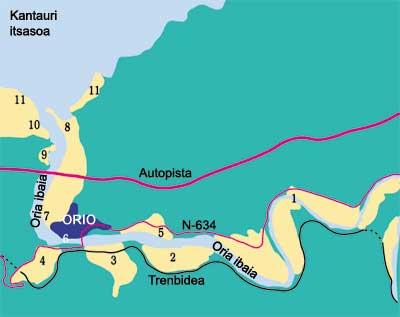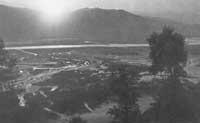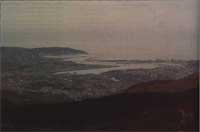Oria, river crying (I)
1992/07/01 Terés, Joxepo Iturria: Elhuyar aldizkaria
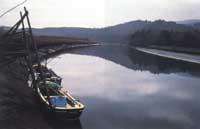
The river Oria, which has been sung and praised repeatedly, almost contaminated by its creative environment, leads to a slope after 66 kilometers of travel. The last riches he still retains in his last line, with the sea as inseparable, have had to cry before the indifference of his most violent enemies.
From this beautiful corner of the coast we want to see things differently. We want the cries of this beautiful river to be hidden with joy, presenting to you the last ecological curiosities it has. Let's see if we all know, preserve and resurrect these wonderful humid areas, such as the riverside, the marsh.
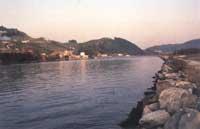
As we know, at this point near the end of the river, thanks to the characteristic salt water/fresh water binomial, the estuary appears. The river begins to dance along these territories, creating wide meanders to reach speed. In this route the water speed is usually low, and when the sun hits the water temperature is increasing.
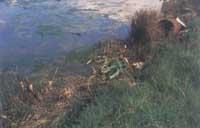
The influence of the tides makes that, in the daily dispute, the banks of the Oria River leave the mouth to a few kilometers. This condition will condition the presence of different plants and specialized animals, grouping the plant communities in zones according to their salinity, with the appearance of banks and marshes.
But let us continue to describe other general characteristics of this estuary. The dissolved oxygen rate varies greatly depending on the water temperature of the mouth and phytoplankton.
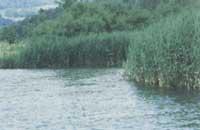
The estuarine system has specific geomorphological processes resulting from the relationship between transport processes generated by river and marine fluctuations. When these effects occur simultaneously, large amounts of sediments are produced, the most important being clay and organic matter compounds. We can say that the sections of its last route, to the left and to the right, are of new formation of sediments, those of the Quaternary, that in most cases present a high degree of anthropization.
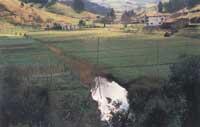
However, as in all estuaries of the Basque Country, human occupation is very evident. The dredging of local channels and, of course, the fillings and canalizations carried out with different objectives have totally conditioned the estuary of the Oria River. In addition, this estuary, like many others, became a natural port, settling around it an abundant population and creating in our case the village of Orio.
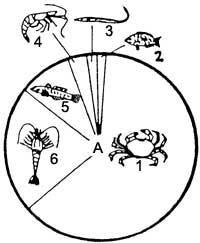
The expansion of this municipality and the need to create spaces for agriculture and livestock, caused the drying of large portions of the estuary, while losing their natural ecological values.
After mentioning, at least in part, what is the estuary and what are its most important singularities, we will mention the most interesting corners of the estuary of the Oria River and the circumstances surrounding them. To do this, we will look at the attached map and try to present photographs and comments regarding each of the representative areas.
Meanders and margins after Aginaga
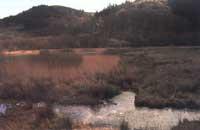
About 6 kilometers from the mouth, the Oria River forms beautiful meanders to accelerate its speed. The stone guards on the banks of the river have been hidden. On these new lands human influence has adapted to the environment and the panorama offered is unique. It would be enough to leave it as it is, eliminating the naïve customs of destroying ecosystems and beautiful corners. The Administration, following the laws and regulations marked by it, should give legal support to this river so that the curiosities that exist in these last kilometers are always preserved.
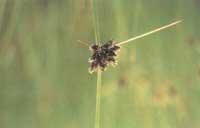
On the other hand, it is time to resolve the unfortunate state of the rivers. Materializing the praised need and planning, this river recovers what had been removed as the rest. However, due above all to the influence of the sea, this route produces a great deformation, as demonstrated by the different studies carried out. For example, INSUBE studied the demersal fauna in the aforementioned walk. For this, he did a very interesting job, classifying the last 6 kilometers in interior, middle and exterior.
As an example, in the study carried out, the amount of supreventive fauna (crustaceans, misescriteos, isopods, crimáceos, amphipods) has been of 10 thousand square meters, a very remarkable density. It will be very interesting to carry out comparative studies after the recovery of the ecological state of the river.
Marshes, alisedas and banks of Motondo
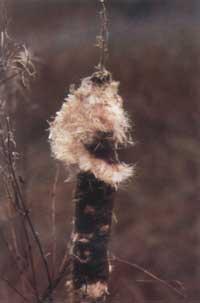
Following the course of the Oria River, in the central area we find marshes, alisedas and banks. Already in these systems, the coastal marshes of the Basque Country are in a very worrying situation. We can say that those who are on this tour are the only and the best in conservation. Due to its extension and configuration, the Motondo stands out.
In this marsh you can perfectly check the natural evolution of the vegetation: plants of muddy areas (aster, reeds,...), and subhalophyte shrubs (Baccharis), when the flow of fresh water predominates the reed, where the aliseda marks the beginning of the forest.
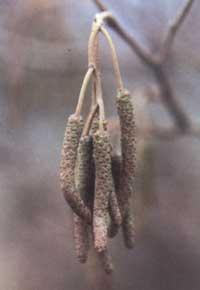
In the marshes there is very little vegetation (halophilus and suhalophilus) in the Basque Country, due to the scarcity of these settlements in which it is located. Adapted only to these places, the estuary of the Oria River remains ideal for this vegetation, undoubtedly enhancing the ecological value of this area.
Taking into account the studies carried out on vegetation (carried out by the Aranzadi Science Society, commissioned by the Government and published), this whole area should have a special treatment. In addition, it can be said that deeper studies could enrich the botanical value of this ecosystem. Of the species exhibited so far, some are very rare, impacting more on their importance.
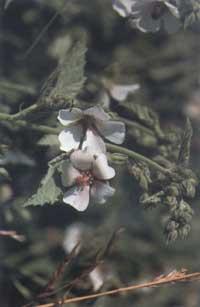
Within this halophyte vegetation (also of nitrophilic characteristics), in general in this last stretch and taking into account all areas, it should be noted: Triglochin maritima, Ruppia maritima, Puccinellia fasciculata, Aster tripolium subsp. tripolium, Inula crithmoides, Halimione portulacoides, Spergularia maritima, Spartina alterniflora, Scirpus maritimus subsp. maritimus, Scirpus pungens, Juncus maritimus and Cochlearia pyrenaica subsp. aestuario.
In addition, around this halophyte community there are other communities (subhalophytes, hydrolifes, nitrophiles, helophytes, ..).
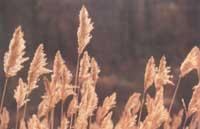
These communities include: Althaea officinalis, Tamarix africana, Alnus glutinosa, Phragnites austrlis, Typha latifolia, Typha angustifolia, Baccharis halimifolia, Apium graveolens, Galim palustre, Galium elongatum, Samolus valustums, Strellum, Stratum, Substrulum. italicum, Bidens tripartite, Alisma plantago-aquatica, Potamogeton pusillus, Iris pseudacorus, Polipogon monspeliensis, Equisetum ramosissimun, Equisetum fluviatile, Lepidium ruderale, Melilotus altissp, Pupruprecatis. pratensis, Eleocharis palustris, Carex otrubae, Carex punctata, Carex amplio, Dactylorhiza maculata, ..
If the reader wishes to further clarify the current situation, see the Vegetation Map of the Autonomous Community of the Basque Country edited by the Government: Page 64–I.
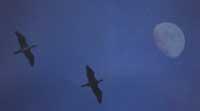
Although we have especially mentioned vegetation, we must not forget other groups of living beings. The bird has its place and is very important. In few observations, birds of great interest have been observed. They can be mentioned: royal heron (wintering), small heron (wintering in recent years), uroiloa, uroilanda, kurlintak, kulisak, txirris, txirritxos, varied gull (argéntea gull, carpet gull, txistulari), cormorants, fishermen, hazelnuts, ducks, etc. However, deeper research would lead to richer conclusions.
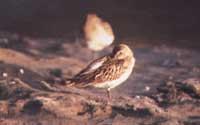
The number of planes will never be large, but diversity will. And it is logical, since many birds migrate along the Basque coast. Unfortunately, there are not as many wet areas as the fingers of one hand.
In conclusion, we can ensure that this last riverbed of the Oria River is an ideal place for different birds to visit. Also, the first step would be to prevent the hunt for nesting for some.
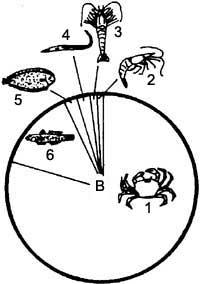
There are other living beings. They are hardly observable for their abundance in the aforementioned area. It should be noted that the number of reptiles and amphibians is relatively high and the density of some species is very important (such as the temporary frog or the red wild frog). Among these groups we can mention the red frog, the common frog, the common toad, the palate triton, the common txantxiku, the green lizard, the viper, the omada snake, the mural lizard,... It seems that the Oria River separates the species from the temperate and humid zone, adopting the latter the typology of the left zone. If we go to the right of the channel, there are other species, such as the marmolaire triton, and not far from the channel the common tree frog and the southern frog (typical species of the Mediterranean area).
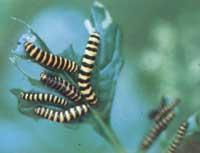
However, the situation of all these species is suffering in some cases a significant delay, especially large species (green lizard, viper, …). Keep in mind that these areas are relatively small and the fillings are quite small.
In this area, approaching the mouth, highlights the number of inhabitants of the river, although biomass and densities of living beings tend to descend. Once again we see the ten green, also highlighting the pleuronectiformes as the dish.
Marsh around the port house
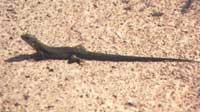
This unique marsh would be a good indicator of the multiple systems that appear on the left and right in this river, as well as the ecosystems of the time. This wonderful marsh houses many of the plant species mentioned above and is an ideal place to enjoy the wonderful song and flight of the kingfisher. Although its condition is quite good, it would be better to improve the vegetation of the left margin (aliseda) and its general state. These corners are necessary within the globality of the Oria River and we should pamper them.
Bank of marshes in the Oribar area
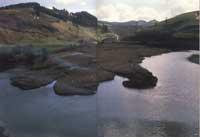
This area should not affect the recovery of acceptable ecological conditions, which from the landscape point of view we consider essential for the globality of the river.
Aliseda and marsh next to the hamlet Txanka behekoa
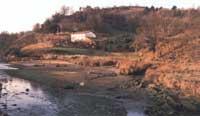
We wanted to highlight this small marsh. On the one hand, because it is very alive from the point of view of its configuration and conservation dynamics, and on the other, as a natural boundary between the river and the road. In the name of progress, we must point out that the movements and machines that alter these environments will become mere historical memories.
Problems of the following areas:
In view of the following photographs, we believe that the reader will not receive any surprise, since in most areas of our coast appear like this. Unfortunately, our eyes are no longer surprised with similar shows.
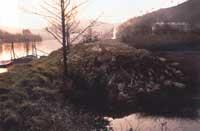
However, we would ask for a little reflection. Today it would be very difficult for us to swallow it, especially because all these areas are exalted as areas of great interest and protection, and given that in our country the situation of these areas is worrying, there is no lack of reason for the conservation and recovery to take place as soon as possible. But for the moment, let's leave the issue because henceforth we will deal more in depth.
History, Crying River
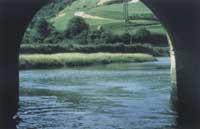
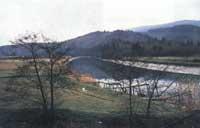
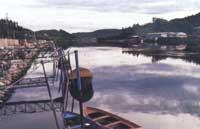
Maybe in that evening you fell in love.
I took the car by a railing and left without direction. I followed the road of San Sebastian at an unstoppable speed, without fear of being kissed by the gossip of the other cars. While the evening sun was up, the sweat emitted by the crystals mixed with tears from my wounded heart. To see little.
I passed the bridge slowing down the speed. The rays of the sun reflected in you blinded me. It suddenly became a spectacle for my eyes. The internal storm began to subside and the throttle relaxed as it looked at you. Although the red light turned me into the world, an unknown passion conquered my faculties. I found it difficult to get away from you, to bring the danger closer. Suddenly, I stepped on the brake and entered an unknown path. When he got out of the car, he was in doubt if he had made a wrong decision. What I experienced later told me I had wrong occurrences.
I was mesmerized by the clumsy songs of a boat and the images that formed the golden waves breaking your uniformity. He sailed quietly in low waters, outdated ships. However, you moved eagerly between fields and orchards. Naughty birds kissing your bright cheeks. Noisy divers, the ballad of your despair. A hidden forest, trying to paralyze you from time to time and you, in the running water, moved with the thirst for freshness, free, wild, but lovingly turned the body on foot, caressing around sweets.
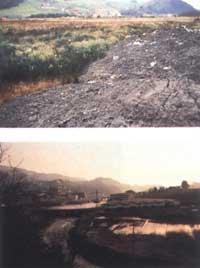
As I went out to the sea, I was filled with it when I felt that your silent desire and your crying became combs. Although I was calmly carrying the desperate screams, I became a jealous being. Jeloskor, the night when the Cantabrian Sea was basing you on its hillside, named me a slave to the lonely soul. Oria, Oria, you fell asleep while singing the melody of your name, immersing yourself in your hidden dreams.
With a new feeling in my heart, I took the car and went out in search of a lost love, because in that evening it showed me that life has hope.
C. Martiarena

Gai honi buruzko eduki gehiago
Elhuyarrek garatutako teknologia




